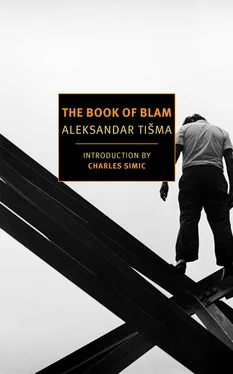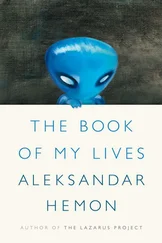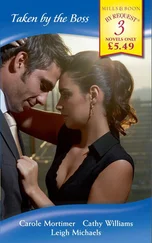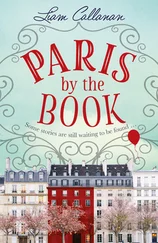Aleksandar Tisma - The Book of Blam
Здесь есть возможность читать онлайн «Aleksandar Tisma - The Book of Blam» весь текст электронной книги совершенно бесплатно (целиком полную версию без сокращений). В некоторых случаях можно слушать аудио, скачать через торрент в формате fb2 и присутствует краткое содержание. Год выпуска: 2016, Издательство: NYRB Classics, Жанр: Современная проза, на английском языке. Описание произведения, (предисловие) а так же отзывы посетителей доступны на портале библиотеки ЛибКат.
- Название:The Book of Blam
- Автор:
- Издательство:NYRB Classics
- Жанр:
- Год:2016
- ISBN:нет данных
- Рейтинг книги:5 / 5. Голосов: 1
-
Избранное:Добавить в избранное
- Отзывы:
-
Ваша оценка:
- 100
- 1
- 2
- 3
- 4
- 5
The Book of Blam: краткое содержание, описание и аннотация
Предлагаем к чтению аннотацию, описание, краткое содержание или предисловие (зависит от того, что написал сам автор книги «The Book of Blam»). Если вы не нашли необходимую информацию о книге — напишите в комментариях, мы постараемся отыскать её.
The Book of Blam — читать онлайн бесплатно полную книгу (весь текст) целиком
Ниже представлен текст книги, разбитый по страницам. Система сохранения места последней прочитанной страницы, позволяет с удобством читать онлайн бесплатно книгу «The Book of Blam», без необходимости каждый раз заново искать на чём Вы остановились. Поставьте закладку, и сможете в любой момент перейти на страницу, на которой закончили чтение.
Интервал:
Закладка:
In number 5 a family of well-to-do Zagreb booksellers had opened a secondhand bookshop for their poor hatter brother, Leon Mordechai. After the Hungarian occupation, Mordechai and his family were deported to Croatia, where they ended up in an Ustasha camp. Mordechai’s wife and daughter died there of dysentery, but thanks to an early apprenticeship as a tailor, Mordechai survived. Having no reason to return home after his release, he went to Zagreb, where he waited a year for members of his large family to show up or give some sign of life. When none did, he moved back to Novi Sad and joined a hat-making cooperative, where he worked until retirement. He never remarried.
Number 8 was the home of a cross-eyed woman who made bathing suits and girdles. Her name was Elsa Baumann, and she was the widow of a surveyor who died young of neuritis contracted during the First World War. She had one son, a student at the vocational school, who was thin, wore glasses, and had thick, constantly chapped lips. Mother and son were both killed in the 1942 raid.
Number 9 was Ernst Mahrer’s laundry. Mahrer had learned his trade in Vienna and was the first to introduce dry cleaning and home delivery to Novi Sad. The van he used had a sun painted on it, with eyes, cheeks, and a smiling mouth. When the van was requisitioned by the Hungarian occupation forces, Mahrer drove it to the artillery barracks himself, parked it in the courtyard, and got out to wait while the papers were drawn up. When the officer in charge saw the smiling sun and the firm’s name, he reprimanded Mahrer for not having painted them over. Mahrer responded that that was the least the recipients of the free van could do. Furious, the officer snatched the rifle from the shoulder of a guard, pounded Mahrer with the butt until he fell unconscious, then jumped into the van, whose motor was still running, and ran over him. Word of the incident got around, and the officer was transferred and Mahrer’s widow and children ordered to leave Novi Sad forthwith. They received official permission to move to Budapest. In 1943 the son was sent to forced labor in the Bor mines, but escaped and joined the Yugoslav partisans. After the war he remained an officer in the Yugoslav army. Mahrer’s widow and daughter were killed during an Arrow Cross show of strength in the Budapest ghetto.
The owner of the shoe shop at number 10 was a methodical, meticulous man named Armin Weiss. A lover of things beautiful and costly — more aesthete than merchant — he was known as far as Budapest for his expertise. Immediately after the occupation a Budapest company offered to make his shop a branch of theirs and let him stay on as an employee. Armed with papers documenting this all-but-governmental commission, he escaped forced labor, which the military authorities prescribed for all Jews; he also survived the raid several months later. But when the Arrow Cross came to power early in 1944, Weiss was deported to Germany with his wife, two daughters, and mother-in-law. None of them returned.
Number 11 was shared by a lamp merchant, Eduard Fiker, and a stove fitter, Jakob Mentele. Fiker and his family were killed in the raid, while Mentele, a bachelor, managed to survive. He then left Novi Sad for Budapest, where he acquired false documents and lived out the war. After the war he remained in Budapest and died of cancer several years later.
Number 13 housed Arthur Spitzer’s grocery and delicatessen. Spitzer played amateur soccer and had non-Jewish friends. Having married a Hungarian and converted before the war, he was spared persecution. He had no children of his own, but his sister sent him her six-year-old daughter from the Independent State of Croatia, where Jews had an even harder time of it. Spitzer held on to his business until the Arrow Cross came to power, and for a while his baptismal certificate, Christian wife, and soccer friends protected him. On the day his young Jewish niece was to be deported, Spitzer and his wife went to the station with her, hoping to save her with their papers and connections. They were all crammed into a train for Auschwitz. There Spitzer was separated from his wife and niece. They all died.
Here is where the former Jew Street came to an end. The section after number 12 on the even side and number 13 on the odd side was torn down after the war to make way for New Boulevard, which intersects the stump of the street with a broad, open, two-way thoroughfare sprinkled with traffic lights. But in the distance, beyond the thoroughfare, its severed extremity — the dot under the exclamation mark — is still visible: a tall, secluded synagogue with Moorish cupolas that is occasionally used for concerts by the Novi Sad Chamber Orchestra or visiting ensembles because of its famous acoustics and absence of a congregation.
Chapter Four
WHEN HOUSES WERE torn down to make way for New Boulevard, the part of Jew Street subjected to the sledgehammer and pickax provided unexpected opportunities for observation and thought. As the work proceeded and the buildings lost their roofs, the jagged walls jutted into the sky like scarecrows, then became shorter and shorter — melting away, losing their domestic, human face as doors and windows disappeared to expose undreamed-of twists and turns, mazes like coloring-book puzzles — until finally only the foundations remained, naked and floorless, with gaping chasms where cellar stairs had been and the last walls forming the backdrop for a drama of doom. Standing in parallel rows, shorn of crossbeams, these remaining walls gave the most poignant illustration of the temporary nature of human dwellings: from sky blue to pink and from pink to pale green, with brighter patches of various shapes and sizes representing the beds, pictures, wardrobes, chests of drawers that had stood in front of them, protecting them for years from soot and sun, with here and there a hook, nail, or brace sticking out of their otherwise smooth surfaces. The walls with stubborn magnanimity maintained the tastes and habits of the people who were no longer there; they demonstrated that each house, each room was distinctive, unique, providing each family, each individual with its own way of eating, sleeping, reading, cursing, making love, throwing a fit, and that these different ways of doing things coexisted in amazingly close proximity to one another as well as to what the buildings themselves had kept at bay — the world, the sky, the rain to which they were now pitilessly exposed — and with which they were now becoming one.
BLAM COMES OUT into New Boulevard amid the cross-fire of traffic lights and directional signals and the smoke of exhaust pipes. His way is blocked by a light-brown car with a body like a tortoise. It wiggles slowly onto the curb and stops at the very end of the former Jew Street. Blam also stops, instinctively. The back door opens with a click, and out comes a pair of long, tan legs bent at bony knees and a dress hitched up to the thighs. The legs and narrow feet dangle for a few seconds, the changing traffic light reflected on the white sandals; then they alight on the yellow brick of the former Jew Street, knees together, feet apart, spreading spongelike under the weight of the body now rising, head first, out of the open car door. It is a slender body topped by an elongated head with flat features. Protuberant, glassy eyes and sun-bleached hair gathered carelessly in a bun give the face a lifeless quality, yet the woman moves in a lithe, self-confident manner. She stands straight, stretches, and makes a half turn, swishing her slightly wrinkled green dress — loose but belted at the waist — around her bony knees. At the wave of a hand that is as suntanned as her legs, a child’s feet in short white socks push out of the door, then the freckled face of a boy with watery goggle eyes appears in the sunlight, and eventually a whole little figure, slightly dazed and distrustful, staggers out into the street and up to the woman. She takes the boy by the hand, which he has automatically held up to her, and looks around. Her pale eyes fall on Blam, run up and down his diffident frame, then wander to the stands selling lottery tickets, books and records, cold drinks and ice cream. Now she motions to the car, completes her turn, and sets off down the street with the child, passing Blam. The other door of the car opens, and a broad-shouldered, thick-necked man wearing a yellowish-brown T-shirt stretched tightly across a hefty stomach twists his way out. He slams the door, thrusts his hands into the pockets of his floppy gray trousers, and walks around the car, examining it with great care. Then, bending all the way down, he takes one hand out of his pocket and feels a back tire (which is beyond Blam’s range of vision), pats the lock on the luggage compartment, and closes the back door. The woman and boy are now at the other end of the street, she slightly ahead of him. No longer holding hands, they are licking ice cream, which threatens to run down the cones onto their fingers. They come to a halt in front of the man but do not so much as glance at him, their attention riveted on the progress of their tongues along the smooth pink mounds. They lick the now-flattened top of the ice cream, then nibble on the soggy edge of the cone. At one point the woman mutters a few words and purses her lips in the boy’s direction, and he, following her glance, lowers his protuberant eyes to his stomach, where the hem of his white shirt has come out of his tight shorts; but, having found nothing out of the ordinary, he goes back to licking, nibbling, swallowing. Before long their hands are empty, and they stand there staring at their idle, sticky fingers. The woman says something to the man, and he takes his other hand out of his pocket along with a crumpled handkerchief, which he hands to the woman. She unfolds it, wipes her fingers, then bends down and wipes her son’s, tucking in his shirt while she is at it. She returns the handkerchief to the man, who examines it, folds it up, and stuffs it back into his pocket. All three lift their faces and squint at the sun, which, though not visible, sends its rays down between the gables to form a triangle on the gray dusty street, a gold-plated layer of dust. The man walks around the car, opens the front door, and slowly, rocking the car’s body with his bulk, squeezes behind the wheel. Then the woman opens the back door, picks the boy up under his arms, and, bending, swings him onto the seat. She watches him make himself comfortable in the corner, then turns toward Blam (that she sees him without seeing him is reflected in the harmony of her movements), and withdraws first her body and head, then her legs, knees together, into the car. The front door, then the back door clicks shut. The engine turns over and starts humming, and the car rolls slowly back off the curb and joins the stream of traffic moving along New Boulevard.
Читать дальшеИнтервал:
Закладка:
Похожие книги на «The Book of Blam»
Представляем Вашему вниманию похожие книги на «The Book of Blam» списком для выбора. Мы отобрали схожую по названию и смыслу литературу в надежде предоставить читателям больше вариантов отыскать новые, интересные, ещё непрочитанные произведения.
Обсуждение, отзывы о книге «The Book of Blam» и просто собственные мнения читателей. Оставьте ваши комментарии, напишите, что Вы думаете о произведении, его смысле или главных героях. Укажите что конкретно понравилось, а что нет, и почему Вы так считаете.












